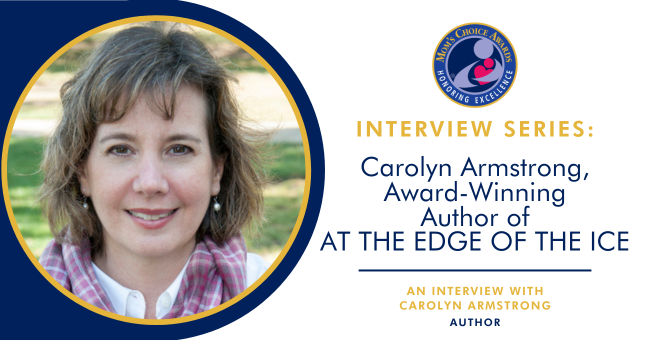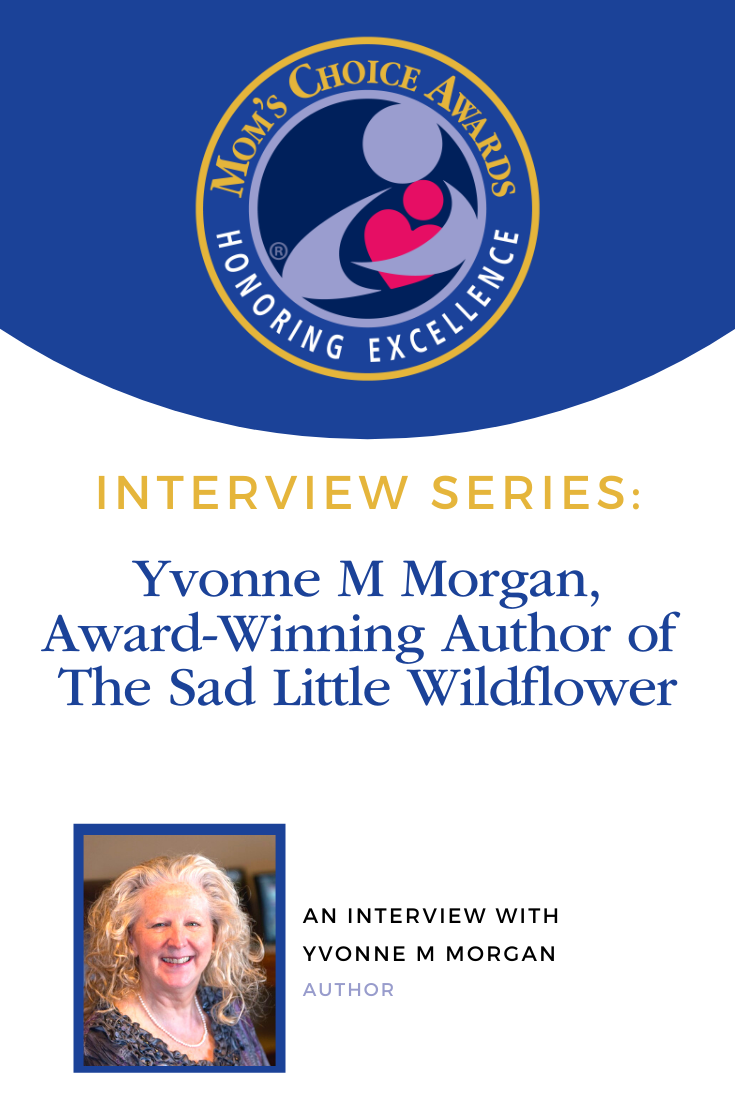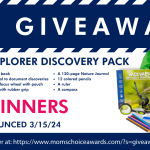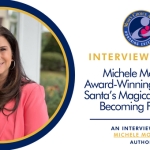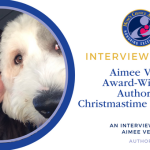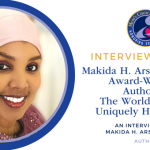Mom’s Choice Awards is excited to announce another post in our interview series where we chat with the inventors, designers, publishers, and others behind some of our favorite family-friendly products.
Today, we’re delighted to have with us author Carolyn Armstrong. AT THE EDGE OF THE ICE is a heartfelt eco-adventure that takes place near the North Pole. When an intuitive 11-year-old Sydney gains the ability to talk with animals, she’s alarmed by what they have to say. Enlisting the help of her brainiac twin sister Sierra, she hopes their activism will make a difference. In this first installment in the Eco Warriors book series, Mom’s Choice Awards Gold recipient Carolyn Armstrong combines what she’s learned as a mom and an educator to help young readers understand they can make a difference to the planet.
MCA: Carolyn, we’re delighted to be able to speak with you today. Won’t you tell us a bit about yourself?
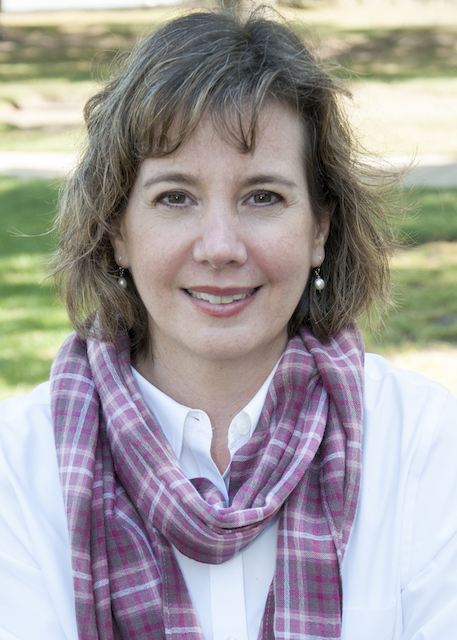 I was born in Dallas, Texas, but lived most of my life in Illinois. Currently I live in the suburbs north of Chicago, two blocks from Lake Michigan. My husband Ben and I have college-age twin boys, as well as a rescue dog named Tucker and two budgies (parakeets) named The Barbaras.
I was born in Dallas, Texas, but lived most of my life in Illinois. Currently I live in the suburbs north of Chicago, two blocks from Lake Michigan. My husband Ben and I have college-age twin boys, as well as a rescue dog named Tucker and two budgies (parakeets) named The Barbaras.
When I was a child, I wanted to be a marine biologist, but I get seasick. I was an elementary school teacher, and my favorite subject was science, especially the animal kingdom unit.
The first books I read as a small child were those bland Dick and Jane books—it’s no wonder the joy of reading didn’t come to me naturally. In fact, I didn’t fall in love with books until I was a full-grown adult, teaching fourth graders on why they should love reading. Fortunately, middle grade novels have come a long way since I was a kid.
I recently had a mini tarot card reading at a friend’s 50th birthday party. I was allowed to select one card. I chose Temperance (or the card chose me, depending on who you ask), which signifies balance, peace, moderation, and patience. It also states that I’ve learned to be in touch with who I am, how to follow my own moral compass, and not let minor issues knock me off balance. I think that describes me very well! It certainly wasn’t the case my whole life, but at this stage it definitely rings true.
At my church, I’m a part of a handbell choir even though I can’t read sheet music. The music director marks the notes on each members’ sheet music. This means the red circled notes are for my right hand. Blue circled notes are for my left hand. Green circled notes are for whichever hand has time to pick up the bell. And if there’s a fourth handbell, yikes!
I love to travel, and when we do, we prefer seeing the hidden gems of our destinations, rather than the touristy hotspots. I always travel to the settings of my books.
I’m very interested in educating myself and others about simple ways to be more sustainable. I have a monthly newsletter on my website called the Earth-Friendly Edition For People Who Love The Planet. I offer eco-friendly things to read, learn, and do.
MCA: Many authors fall in love with reading as children. Since you didn’t, what was your path like to becoming a writer?
After college, I taught fourth graders and fell in love with middle grade novels. Then I became a mother of twin boys who let me read aloud to them every single bedtime—even long after they had become independent readers. Reading the same books as my kids allowed us to have really interesting conversations. Middle school is generally the time when chatty kids (especially boys) go quiet and don’t want to share anything with their moms! So the books gave us something in common while they were hitting their social and emotional milestones.
I remember finishing another novel with them one night and saying, “I want to write a book!” They encouraged me to do so. They read many versions of my first attempts at a novel. Thankfully, I now have a critique group who gets to read those sloppy first drafts. Reading books in the genre I wanted to write was really important. I learned style and pacing, how to do dialogue, and pinpoint character arcs. I also joined SCBWI (Society of Children’s Book Writers and Illustrators) and attended regional conferences where I learned how to write for kids. There are certain rules an author must follow when writing picture books, middle grade, and young adult. The important thing to remember is that writing takes practice! Lots of practice.
What I love most about writing middle grade books (for ages 8-12) is that the characters are going through BIG life stuff but are still completely dependent on their parents. Kids at this age (both as characters in books and in real life) are becoming more aware of what’s happening in the world and how it affects them. Their critical thinking skills develop. There are social and emotional milestones. All of this makes for great writing material!
MCA: What was your inspiration for writing AT THE EDGE OF THE ICE for this age group?
Climate change can be confusing. There’s so much to know! I’m an adult, and if I’m confused, I can only imagine how kids must feel. I created this book series (AT THE EDGE OF THE ICE is Book 1) to explain the many different facets of climate change. Each book tackles one climate issue and highlights animal habitats in peril. This novel focuses on global warming in the Arctic. I don’t water down these complicated issues, but I also don’t want my readers to feel overwhelmed and hopeless. So, I sprinkle in some humor to lighten the mood. And who doesn’t love talking animals?
MCA: Climate change is such an important topic — what are the key lessons found in the book?
First: What happens in the Arctic doesn’t stay in the Arctic. Global warming affects the entire planet.
Second: Kids are capable of doing amazing things.
MCA: If you could ensure readers of your book walk away with one main lesson, what would it be?
Little actions can get big results.
Imagine yourself dining at a restaurant. You say no thanks to the waiter—you don’t want a drinking straw in your soda. It’s not just the one time you refuse the straw. It’s every single time. Your family and friends join in your activism and also stop using a drinking straw, except for the few who actually need it to drink liquids. Those friends tell other friends who tell other friends. Your ban against single-use plastic drinking straws eventually goes viral on social media. Millions of people do the exact same thing: use their voices to make change.
MCA: What a wonderfully simple but powerful example of how small actions can have big results. At what age do children become aware of the “footprint” they leave on Earth and feel a sense of responsibility about good stewardship?
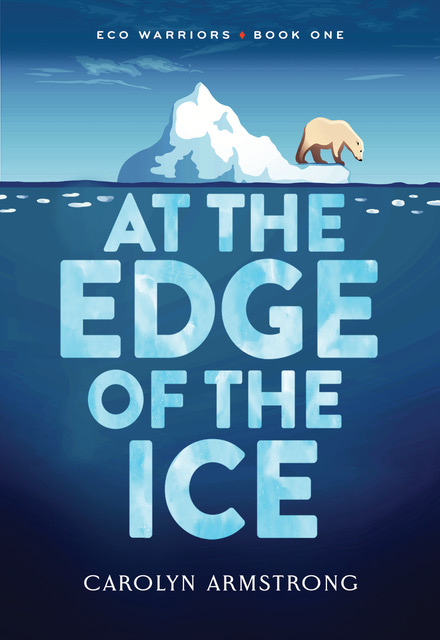 I didn’t want my children to be afraid of spiders. Common house spiders are a natural and essential part of our ecosystem. We’re in their habitat, not the other way around.
I didn’t want my children to be afraid of spiders. Common house spiders are a natural and essential part of our ecosystem. We’re in their habitat, not the other way around.
I began teaching my kids (who were about two years old at the time) to be naturally curious. There was no need to shriek at the sight of a spider, even though I secretly wanted to. We studied a spider as it scooted across the basement floor and made observations about its web. When we were on walks in our neighborhood, I always pointed out stuff for them to notice: the red and yellow leaves in autumn, the puffy clouds, how the air smelled after a rainstorm. We planted flowers together and pulled weeds in the spring. Naturally, they had questions.
For me, it was never about knowing all the answers to my kids’ many questions. It was more about investigating those natural curiosities together. Feeling a sense of stewardship and being aware of their “footprint” are things that grow with age. Learning to respect a spider as a toddler is a good place to start.
MCA: Do you visit a lot of schools, bearing your Earth-friendly messages?
I have a terrific presentation that’s both entertaining and educational. It’s appropriate for middle school as well as adult venues. Besides discussing the book, I give an Earth Science lesson on Arctic ecosystems and global warming. At the end, the audience and I brainstorm ways they can be more sustainable, even pledging to take these new practices into their communities. To learn more about the presentation, head to my website and use the contact page.
MCA: Do parents and educators tend to become involved with reinforcing your message?
Parents and educators are huge influencers of reinforcing my message. If they aren’t, it’s mostly because they themselves aren’t quite sure where to start. The brainstorming session at the end of my presentation acts as a guide.
MCA: What kind of response from readers have you received?
I’ve received very positive reviews! Kids also love the giant stuffed polar bear I bring to author fairs/festivals and book talks. They always want to pet the bear and talk to it—like Sydney does in the book!
MCA: Can we expect to hear more about the two sisters in future writing endeavors?
Book 2 in the Eco Warriors book series is due out next summer. Same characters—Sydney and Sierra—visit a new location with a new set of animal sidekicks. The girls are even more active in their quest to solve the environmental issue their animal friends face. Book 3 is in the research phase. The setting and animal habitat have already been selected. I just have to write the story!
MCA: What an inspiring message you bring to your readers and listeners! We wish you well as you continue to develop this fascinating series.
You can learn more about Carolyn Armstrong and her award-winning book, AT THE EDGE OF THE ICE, by visiting her MCA Shop pages.

